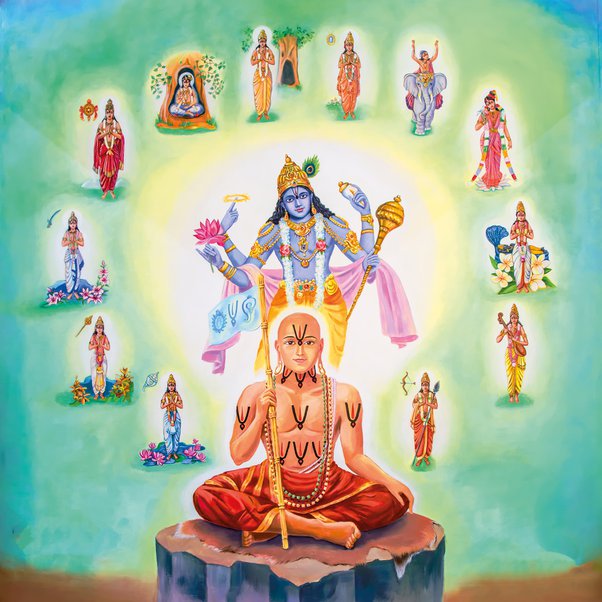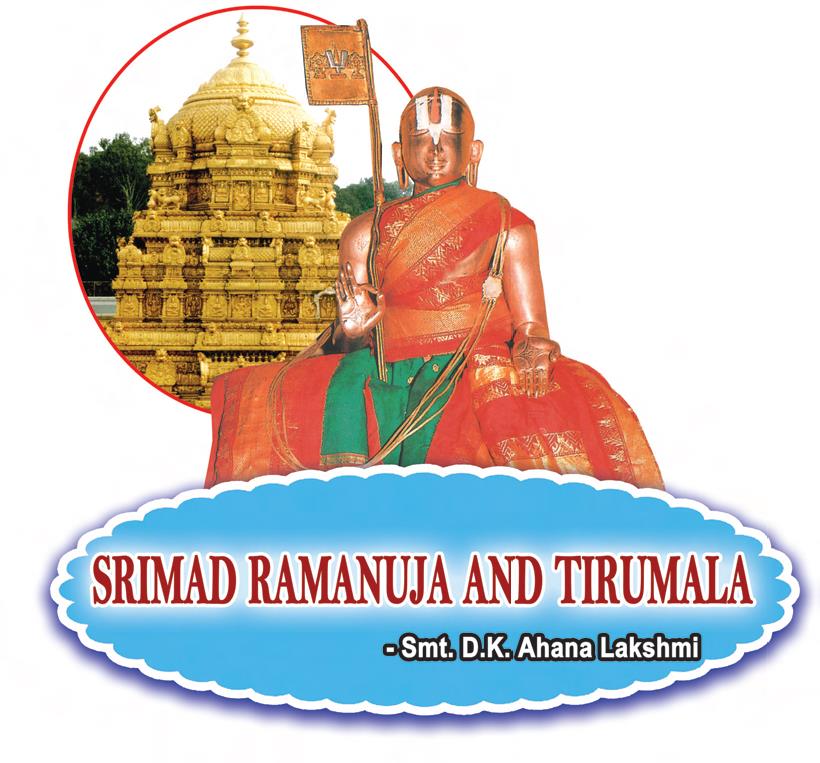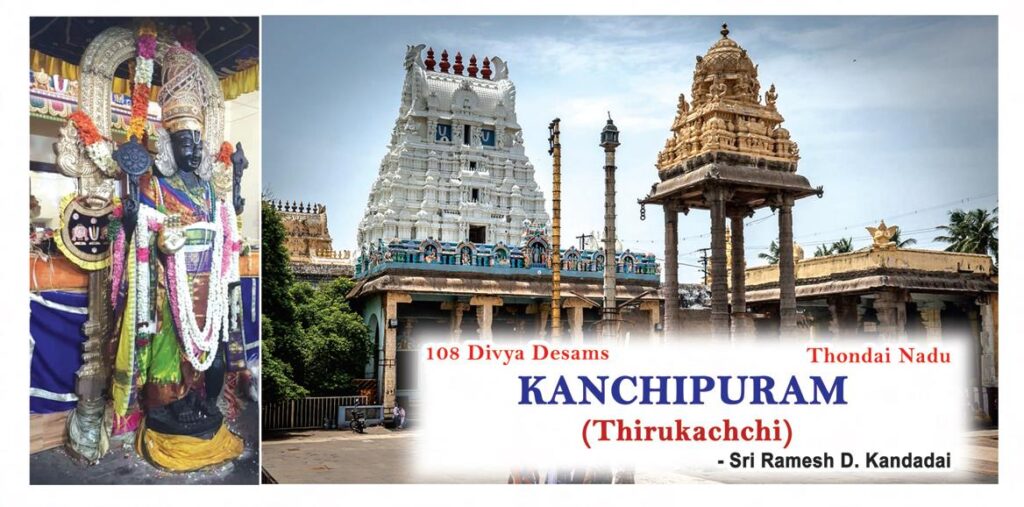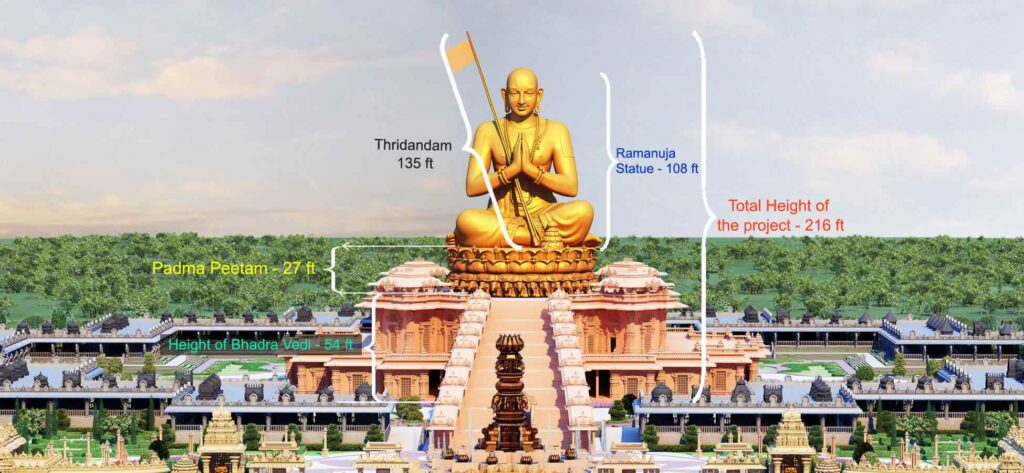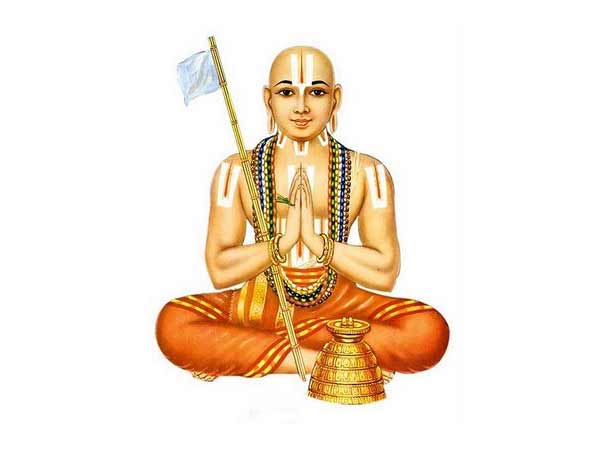Bangaru Baavi (Golden Well) There is a well by the side of Lord’s chief kitchen. This well is known as Bangaru Baavi (Bangaru means gold in Telugu. Baavi means well). When devotees come out through the Golden door after having the darshan, a path leads to the chief kitchen opposite the Golden door. Adjacent to Read More
Tag: Sri Ramanuja
Sri Ramanuja, the Vaishnavaite philosopher, was born in Sriperumbudur near Chennai. He spent his life between Kanchipuram, Srirangam and Melkote. A significant portion of his time was spent travelling around India.
Exemplary Disciples of Sri Ramanuja
Disciples of Sri Ramanuja Sri Ramanuja had a glorious convention of highly celebrated ‘gurus’ (Teachers) and deeply devoted ‘sishyas’. Ananthazhwar / Ananthalwar / Ananthalwan Ananthalwan, a native of Kirangur, near Panavapura in Karnataka, an ardent disciple of Sri Ramanuja, at the benign order of Sri Ramanuja, settled in Tirumala in the service of Lord Srinivasa. Read More
Sri Ramanuja Jayanti 2024
Sri Ramanuja Jayanti Sri Ramanuja, the Vaishnavaite philosopher, was born in Sriperumbudur near Chennai. He spent his life between Kanchipuram, Srirangam and Melkote. A significant portion of his time was spent travelling around India. Amongst the many places where his influence has been felt is Tirumala, the abode of Lord Venkateswara. He was not just Read More
Sri Varadharaja Perumal Temple – Kanchipuram (108 Divya Desams)
Kanchipuram – Location The famous town of Kanchipuram or Kanchi or Thirukachchi is located 75km due west and a little south of the capital city of Chennai in the south Indian state of Tamil Nadu. Since the Chennai Bengaluru highway goes right by the town, connectivity is no problem. Kanchipuram – Google Maps Location There Read More
Meaning of “Singan Murai” and “Jeeyar”
Singan Murai Singan was a devotee who used to supply wood for the temple kitchen service. Intending to show his service to Him with devotion, Tiruvenkatamudayan sent wood for his cremation when he died. This kind of kainkaryam by supplying wood to the Sannidhi kitchen Singan is even now called “Singan Murai”. Murai means “doing Read More
Sri Ramanuja
Sri Ramanuja – Great Personality Sri Ramanuja was born to Kesava Somayaji – Kanthimathi couple in the year 1017 A..D in Pingala Year, Chitra Month, Mesha Raasi, Thiruvadhira Nakshatra at Sriperumbudur near Kanchipuram. Glow and Appearance His maternal uncle Tirumala Nambi (Sri Saila Purna) came from Tirumala to Sri Perumbudur, looked at the child, and Read More
